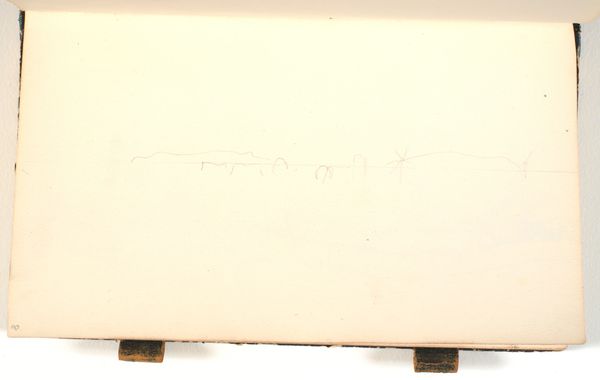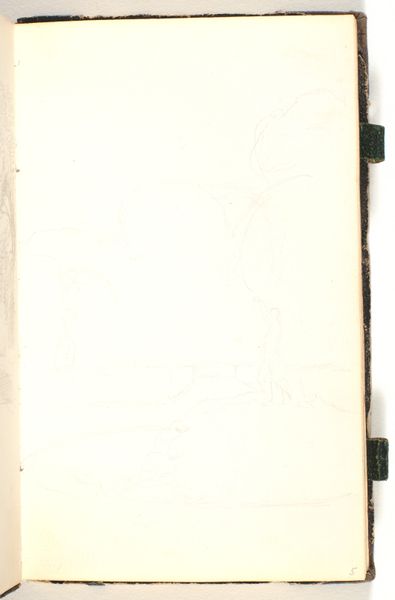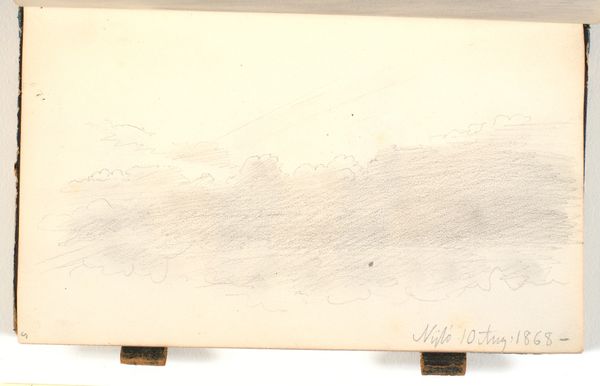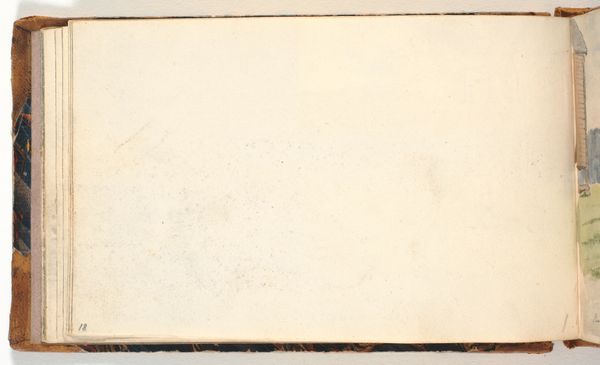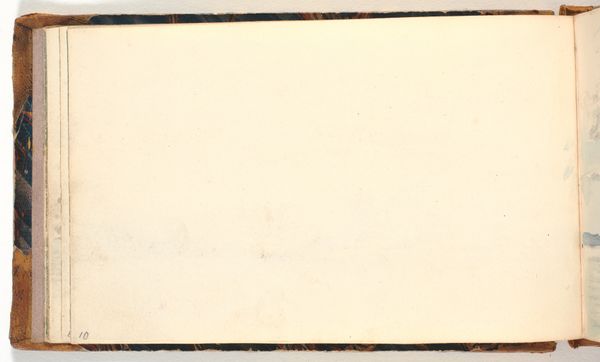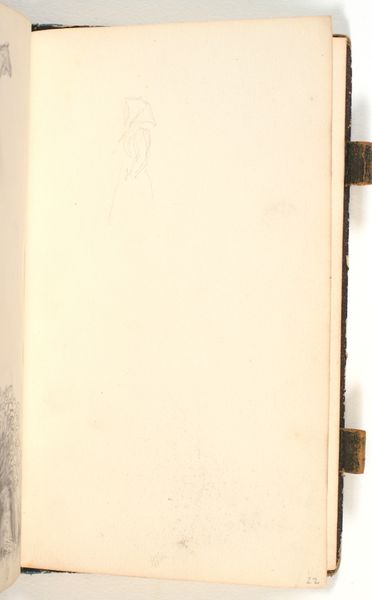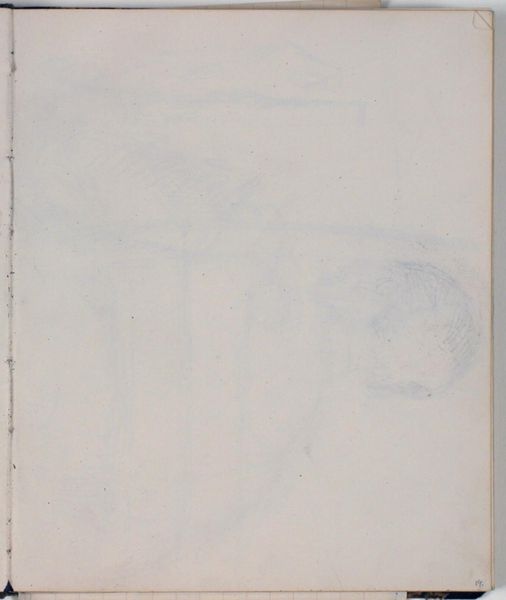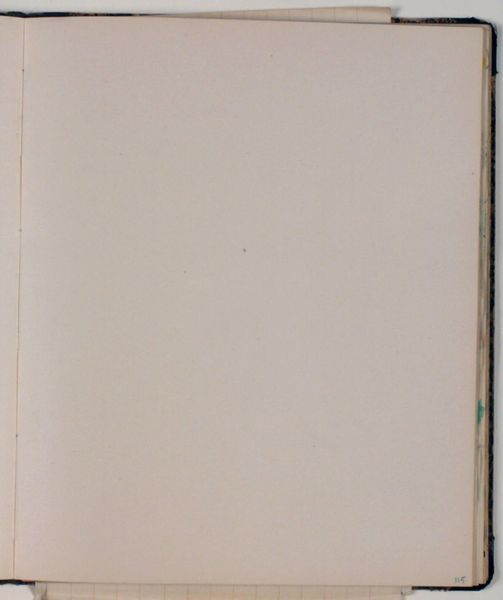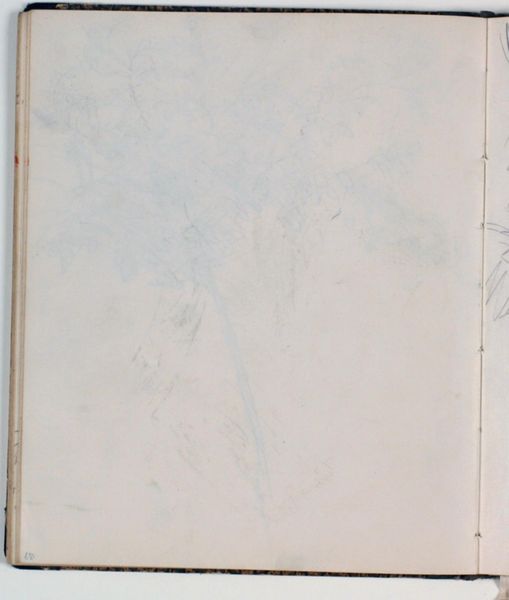
Dimensions: 163 mm (height) x 100 mm (width) (bladmaal)
Curator: Here we have a drawing titled "Skovbryn" created in 1865 by P.C. Skovgaard. It's a landscape sketch done in pencil and watercolors on paper and is currently held at the SMK, the National Gallery of Denmark. What’s your initial reaction? Editor: It feels fleeting. A quick impression captured on the move. The barest whisper of form. It really invites quiet contemplation. What can you tell me about it from an art historical point of view? Curator: Skovgaard was central to the development of Danish national romantic painting, where landscape was used as a way to reflect Danish cultural identity. He was trying to express authentic Danishness, a sort of national soul. "Skovbryn" or "Forest Edge" fits in that effort perfectly, depicting a typical pastoral theme which promoted that kind of cultural symbolism. Editor: The way the forest is barely suggested makes me wonder, does it have any resonance to stories and cultural archetypes associated with woods? A border between the known and unknown perhaps, or is it simply an area of quiet escape? The soft watercolors would lean into that idea of escape. Curator: Precisely. The romanticism of the period absolutely played with the dichotomy you are suggesting. Escape to nature from urban life became almost a political statement as industrialization took hold. The image has an undeniable symbolic power by depicting the national landscape. The very act of its creation, its dissemination through exhibitions and reproductions would all amplify that power. Editor: Looking at it, you wouldn’t know. It’s not overtly political, but understanding that the natural landscape had, and perhaps still has, significance makes me look closer. There's also that wonderful feeling of calm to it. You get a sense that it must have been quite peaceful on that summer day. Curator: These seemingly simple pastoral scenes served a complex social and cultural purpose, both reflecting and shaping perceptions of what it meant to be Danish in the 19th century. The cultural meaning of landscape should never be discounted. Editor: It really underlines the idea that even the most serene images can carry a huge amount of cultural weight and even subtle meaning. Curator: Indeed. Next time, we shall dive a little deeper to see how an artwork can simultaneously depict and participate in its world.
Comments
No comments
Be the first to comment and join the conversation on the ultimate creative platform.
